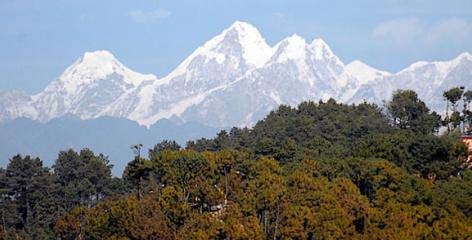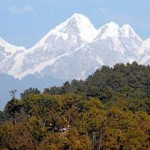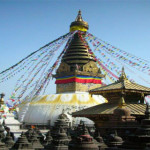Nagarkot Hiking Day Tour 1 Day

Nagarkot Hiking Day Tour is suitable for those visitors who have come to Kathmandu and visited our trekking package. Also, a day tour could be equally handy for those travellers who are already in Kathmandu having 1 or 2 spare days pre or post tour of their main holiday.Our bespoke escorted day tour will take you to some of our cultural heritage & historical monuments sites within periphery of Kathmandu valley including Bhaktapur Durbar Square (World Heritage Site), Changu Narayan Temple(World Heritage Site) and beautiful hills of Nagarkot. Also, an escorted day hiking tour of 3-6 hours can be arranged nearer Kathmandu valley with a glimpse of Kathmandu valley and Himalayan ranges.
A day Tour of Nagarkot & Bhaktapur
Early morning pick up from our hotel and drive to Nagarkot; and continue guided tour to Bhaktapur. After end of the tour you will be transfered back to our hotel in Kathmandu.
Nagarkot is a famous place to see the mountain ranges and sunrise. It lies at an altitude of 2211 m and is located 30 km north east of Kathmandu. (approx. 1 hour drive). If weather is good, one can see great views of Himalayas including Annapurna, Langtang, Dorje Lakpa, Gauri Shanker and Ganesh Himal. The mountain flight that goes each day to show Everest and other Himalayas from Kathmandu goes via the Nagarkot route. Many visitors go to Nagarkot to see sunrise. Once the sun begins to rise from behind the Himalayas, it looks spectacular as mountain changes its color. However to see the sunrise, visitors have to go to Nagarkot at 4 o’clock in the morning.Nagarkot is also a good place for day hiking. One can hike from Changu Narayan, Sundarijal, Banepa, and Nala and also from Sankhu Bajrayogini.
Bhaktapur Durbar Square is a conglomeration of pagoda and shikhara – style temples grouped around a fifty-five-window palace of brick and wood. The square is one of the most charming valley as it highlights the ancient of the kings perched on top of stone monoliths, the guardian deities looking out from their sanctuaries, the wood carvings in very place – struts, lintels, tympanums, gateways and windows – all seem to form a well orchestrated symphony.
Dating as far back as AD 1696 this gate is guarded on either side by huge statues of lions. Alongside, there are two stone images of (the dreadful aspect of Shiva) and Ugrachandi (the consort of the Shiva in her fearful manifestation).
The Golden Gate:
The Golden Gate is said to be the most beautiful and richly moulded specimen of its kind in the entire world. The door is surmounted by a figure of the goddess Kali and Garuda (the mythical man – bird) and attended by two heavenly nymphs. It is embellished with mythical creatures of marvelous intricacy. In the words of Percy Brown, and eminent English are critic and historian, the Golden Gate is the most lovely pieces of are in the whole Kingdom; it is places like a jewel, flashing innumerable facets in the handsome setting of its erected by King Ranjit Mala and is the entrance of the main courtyard of the palaces of Fifty – five windows.
Duration: 1 day (9am – 5pm)
Departure point: Mountain Safari (P.) ltd office, Nag Pokhari, Kathmandu @ 9am or pickup from your hotel upon request.
First site: Nagarkot, 1 hour drive and 15 minutes walking to Nagarkot Tower
Second site: Hiking from Nagarkot to Changu Narayan(short treking route), about 2 hours walking
Third site: Changu Narayan Temple
Final site: Bhaktapur Durbar Square, 30 minutes drive from Changu Narayan Temple
Return point: Mountain Safari (P.) ltd office, Nag Pokhari, Kathmandu @ 5pm or drop at your hotel upon request.
Itinerary Overview
-
Trip Details
- Country Visited: Nepal
- Trip Start: Nagarkot , 1 hour drive and 15 minutes walking to Nagarkot Tower
- Trip Ends: Bhaktapur Durbar Square, 30 minutes drive from Changu Narayan Temple
- Destination: Nagarkot/Bhaktapur
- Trip Route: kathmandu- Bhaktapur-Nagarkot-Kathmandu
- Max. Altitude: 2170m
- Activity Per Day: Approximately 5 hours walking
- Trip Category: Day Tours
Trip Highlight
- views of a massive mountain range, including the Mount Everest are stunning.
- famous place to see the mountain ranges and sunrise
- Changu Narayan Temple
- the ancient of the kings perched on top of stone monoliths, the guardian deities looking out from their sanctuaries, the wood carvings in very place – struts, lintels, tympanums, gateways and windows
If This Is Right Trip For You?
Contact our Travel Expert
Head Office
Tel No: +977 (1) 4414943 / 4414944
Hotline: +977 9851098887(24 Hour)
Email: info@mountainsafarinepal.com
Call Us On: 


 Trip Information
Duration: 1 Day
Trip Information
Duration: 1 Day












